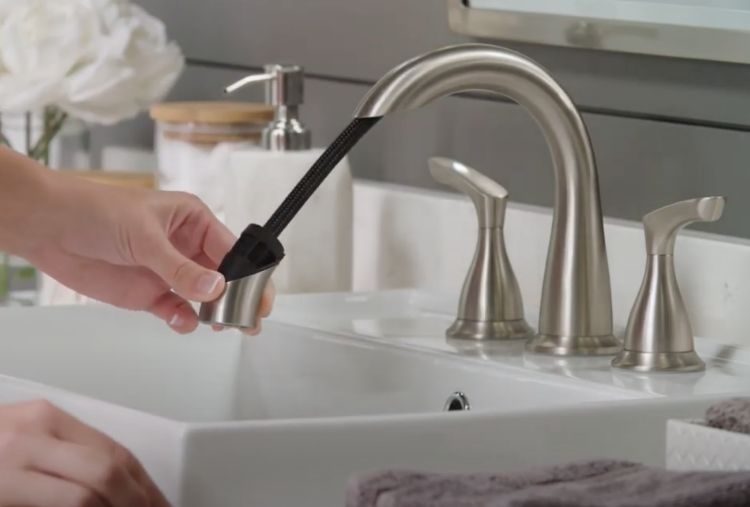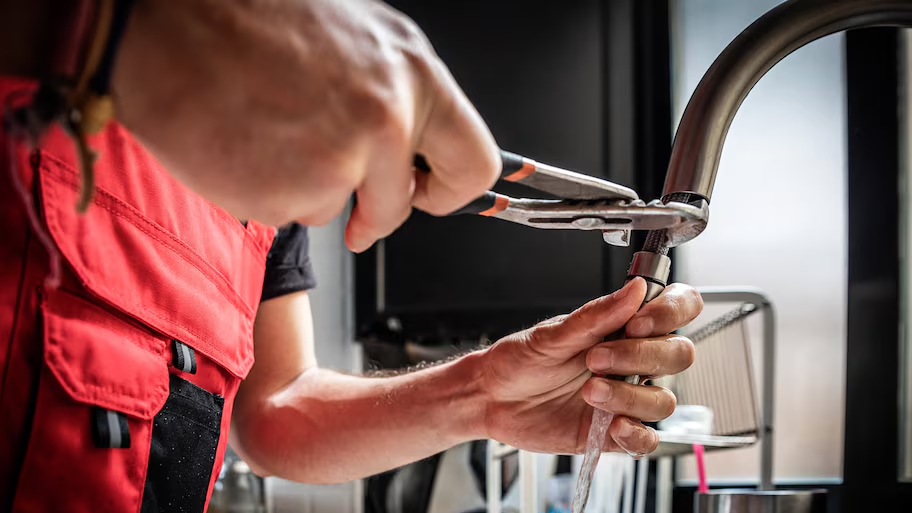What're your ideas on Why Is It Important To Fix Your Leaking Tap/Faucet??

Trickling taps may appear like a small aggravation, but their impact exceeds simply the annoyance of the sound. From drainage to sustaining unnecessary financial costs and health threats, neglecting a trickling faucet can lead to numerous consequences. In this write-up, we'll explore why it's important to resolve this usual home concern quickly and properly.
Waste of Water
Ecological Impact
Trickling faucets contribute dramatically to water wastage. According to the Environmental Protection Agency (EPA), a solitary tap leaking at one drip per secondly can throw away more than 3,000 gallons of water per year. This not only stress water resources however additionally impacts ecological communities and wildlife dependent on them.
Step-by-Step Overview to Fixing a Dripping Faucet
Devices Called for
Prior to attempting to repair a trickling tap, gather the necessary tools, consisting of a flexible wrench, screwdrivers, replacement components (such as washing machines or cartridges), and plumber's tape.
Usual Faucet Issues and Their Solutions
Determine the type of tap and the certain problem causing the drip. Usual issues include damaged washers, rusty valve seats, or faulty O-rings. Describe producer guidelines or on the internet tutorials for detailed support on repairs.
Financial Expenses
Boosted Water Expenses
Beyond the ecological impact, leaking faucets can pump up water expenses considerably. The gathered wastage over time converts right into greater utility costs, which can have been prevented with prompt repair work.
Potential Residential Property Damage
Moreover, extended dripping can result in damage to components and surface areas surrounding the faucet. Water build-up can trigger discoloration, rust, and even structural concerns if left neglected, leading to extra repair work costs.
Wellness Problems
Mold and Mildew Development
The continuous visibility of moisture from a dripping tap creates a perfect setting for mold and mold growth. These fungis not only endanger interior air quality however additionally pose health and wellness threats, especially for people with breathing problems or allergic reactions.
Waterborne Conditions
Stationary water in dripping taps can end up being a breeding place for microorganisms and other pathogens, enhancing the threat of waterborne conditions. Pollutants such as Legionella microorganisms grow in stagnant water, potentially causing severe illnesses when ingested or inhaled.
DIY vs. Professional Repair work
Benefits and drawbacks of Do It Yourself Repair Service
While some might attempt to repair a dripping faucet themselves, do it yourself repair services include their own set of obstacles. Without appropriate understanding and tools, do it yourself attempts can exacerbate the concern or lead to insufficient repair work, prolonging the issue.
Benefits of Working With an Expert Plumber
Employing an expert plumber makes certain that the underlying reason for the trickling faucet is addressed successfully. Plumbing technicians have the know-how and equipment to identify and fix tap issues efficiently, saving time and lessening the threat of more damages.
Ecological Responsibility
Individual Contribution to Conservation
Taking obligation for taking care of trickling taps lines up with wider initiatives toward water conservation and environmental sustainability. Every individual's activities collectively make a considerable impact on preserving precious sources.
Lasting Living Practices
By prioritizing timely repair work and adopting water-saving behaviors, people contribute to lasting living techniques that benefit both present and future generations.
Safety nets
Routine Maintenance Tips
To stop dripping taps, carry out routine maintenance such as cleaning up aerators, inspecting for leakages, and replacing worn-out components quickly. In addition, take into consideration setting up water-saving tools or updating to a lot more effective components.
Significance of Prompt Repairs
Dealing with leaking faucets as soon as they're observed stops more water waste and possible damages, ultimately conserving both water and cash in the long run.
Effect On Home Worth
Assumption of Well-Maintained Building
Keeping a residential property in good condition, consisting of resolving upkeep concerns like leaking faucets, enhances its regarded value and value amongst possible purchasers or tenants.
Impact on Resale Value
Characteristics with well-maintained plumbing components, including taps, command greater resale values in the property market. Dealing with trickling faucets can add to a positive impact during building evaluations and arrangements.
Conclusion
Attending to a trickling faucet goes beyond simple benefit; it's a necessary action toward conserving water, minimizing monetary prices, and safeguarding health and property. Whether with DIY repair services or expert help, acting to take care of leaking taps is a small yet impactful way to advertise liable stewardship of sources and contribute to a healthier, extra lasting future.
How to Fix a Leaky Faucet: Step-by-Step Repair Guide
A leaky faucet may seem like a simple annoyance, but if it's not fixed promptly, that leak could cost hundreds to potentially thousands. From water damage to mold, mildew, and high water bills, even a tiny leak can be catastrophic if left unattended. Damage like this can even affect the overall value of your home, so it's important to take the right approach for leaky faucet repair. You may need the help of a plumber in some cases, but we've got a few tips you can try on how to fix a leaky faucet before calling the pros.
Four Faucet Types
When you're learning how to fix a leaky faucet, the first step is knowing what kind of faucet you're working with! There are four common types.
Cartridge Faucets
Cartridge faucets come in one- or two-handled varieties. In one-handled cartridge faucets, hot and cold water combines in a single cartridge. In the two-handled versions, hot and cold water are controlled separately and mixed in the faucet.
Ball Faucets
Ball faucets have a single lever you push up and down to adjust the pressure and rotate to change the temperature. A slotted metal ball controls the amount of water allowed into the spout.
Compression Washer Faucets
They're the oldest type of faucet, but they're still used in many homes — especially older ones. Compression faucets have two separate handles that, when turned, raise or lower the washer that seals a water valve. This valve stops water from flowing through the faucet when it is turned off.
Disc Faucets
Disc faucets rarely need to be repaired due to their maintenance-free design. The water flow is controlled by two discs — the upper one raises and lowers against a fixed lower disc, creating a watertight seal. If your disc faucet starts leaking, you may need to replace the seals or clean residue buildup from the inlets.
Fixing a Leaky Faucet
Step 1: Turn Off the Water
Whether you're learning how to fix a leaky bathtub faucet or how to fix a leaky kitchen faucet, always turn off the water supply to your working area when you're fixing a leak. The last thing you want is a flood added to your list of things to fix.
Look for the shutoff valves below your sink or around the tub and turn them clockwise to stop the water flow. If your faucet doesn't have shutoff valves, you may need to turn off the water for the whole house. Check to make sure it's off by turning the faucet on. If nothing comes out, you're ready to start the repair.
Step 2: Take Apart the Faucet
How you disassemble your faucet depends on the type of fixture you have. You can use a flathead screwdriver to remove the caps on top of the handle or handles for cartridge and compression faucets. Inside, you should see handle screws. Unscrew these with a screwdriver to remove the handle.
Disc- and ball-style faucets will typically have an inlet screw near the handle, and removing that will reveal the interior of the faucet.
Detach the Valve Stem
For cartridge- and compression-style faucets, you'll see the inner valve stem or cartridge once you remove the faucet handles. If you have a compression faucet, unscrew the brass valve stem. If you have a cartridge faucet, pull out the cartridge. If your cartridge has been in place for a while, it may require some tools or extra force to remove it due to mineral deposits.
Examine and Replace Parts
Once you've removed the parts, check them out to confirm what needs to be replaced. You may see corroded rubber washers, O-rings, stems, or cartridges. On a ball-style faucet, check the seats and springs for damage.
If you need to repair a leaky disc faucet, check the inlet and seals on the lower disc.
Once you determine what parts must be replaced, visit your local hardware store. Bring the damaged parts with you to ensure you can purchase the correct components to replace them.
Clean Valves and Faucet Cavity
If you've removed a stem or cartridge, you may notice mineral buildup in the faucet's threads. Use white vinegar to clean the valve seat by soaking it for a few minutes, then scrub it away with a soft toothbrush and rinse with warm water. You can also clean the interior of the faucet in the same way.
Reassemble the Faucet
Once your faucet is cleaned and the required parts have been replaced, it's time to reassemble it. Put the pieces back together and slowly turn the water supply back on. Doing this slowly is crucial because too much initial water pressure can damage the new hardware you've just installed.
https://homewarranty.firstam.com/blog/how-to-fix-leaky-faucet

We were made aware of that report about Why Is It Important To Fix Your Leaking Tap/Faucet? through a friend on a different website. Enjoyed our write-up? Please quickly share it. Let other people locate it. Thank you for being here. Revisit us soon.